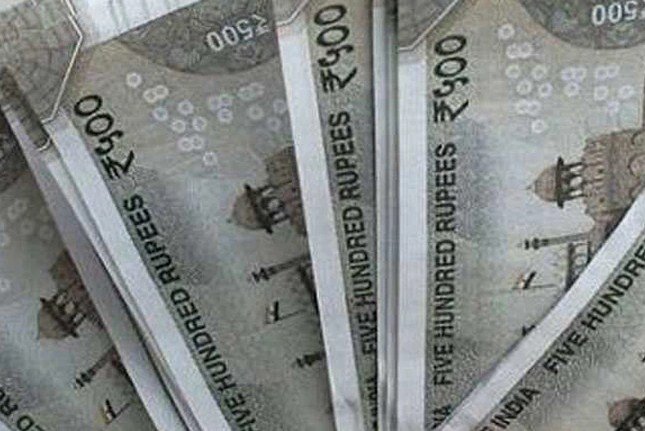The Indian rupee depreciated against the US dollar on Thursday, tracking the weakness in other Asian currencies and the increased demand for the greenback from state-run banks.
Rupee opens lower at 74.83 per dollar
The rupee opened at 74.83 per dollar, down 0.16% from its previous close of 74.72. The currency touched an intraday low of 74.86 and a high of 74.77 in the early trade.
The rupee has been under pressure in the past few sessions due to the surge in global crude oil prices, which has widened India’s trade deficit and increased the import bill. The Brent crude futures rose 0.4% to $84.64 per barrel on Thursday, after hitting a three-year high of $85.45 on Wednesday.
The rupee has also been weighed down by the uncertainty over the tapering of the US Federal Reserve’s bond-buying programme, which could lead to a rise in the US interest rates and a stronger dollar. The Fed is expected to announce its policy decision on November 3, followed by a press conference by its chair Jerome Powell.
Dollar index gains as US inflation data boosts rate hike expectations
The dollar index, which measures the strength of the greenback against a basket of six major currencies, rose 0.2% to 94.18 on Thursday, after hitting a one-year high of 94.56 on Wednesday.
The dollar gained momentum after the US consumer price index (CPI) data for September showed that inflation remained elevated at 5.4% year-on-year, the same as in August and above the Fed’s 2% target. The core CPI, which excludes food and energy prices, also rose 4% year-on-year, unchanged from the previous month.
The high inflation data increased the expectations of a faster and more aggressive rate hike cycle by the Fed, which could boost the dollar’s appeal as a safe-haven asset and a higher-yielding currency.
Asian currencies weaken as China’s power crisis worsens
The rupee also followed the weakness in other Asian currencies, which were affected by the worsening power crisis in China, the region’s largest economy and trading partner.
China’s power crunch, caused by a shortage of coal supplies and strict environmental regulations, has disrupted the industrial production and economic activity in the country, raising concerns over its growth outlook and spillover effects on the global economy.
The Chinese yuan fell 0.2% to 6.4475 per dollar on Thursday, after hitting a three-week low of 6.4588 on Wednesday. The Indonesian rupiah dropped 0.4% to 14,385 per dollar, the Philippine peso declined 0.3% to 50.64 per dollar, and the Malaysian ringgit slipped 0.2% to 4.1875 per dollar.
Outlook for the rupee
According to analysts, the rupee is likely to remain under pressure in the near term, as the domestic and global factors continue to weigh on the currency.
“The rupee is expected to trade in a range of 74.50-75.00 per dollar in the coming sessions, with a downward bias. The rising crude oil prices, the Fed’s tapering expectations, and the China’s power crisis are the key factors that could drag the rupee lower,” said Anil Kumar Bhansali, head of treasury at Finrex Treasury Advisors.
However, some analysts also believe that the rupee could find some support from the positive domestic factors, such as the robust foreign portfolio inflows, the strong economic recovery, and the stable fiscal and monetary policies.
“The rupee could see some relief from the healthy foreign inflows into the Indian equity and debt markets, which have been driven by the improving corporate earnings, the easing of the Covid-19 restrictions, and the attractive valuations. The rupee could also benefit from the prudent fiscal and monetary policies of the government and the Reserve Bank of India, which have maintained the macroeconomic stability and the investor confidence,” said Kunal Sodhani, chief currency strategist at ICICI Securities.

